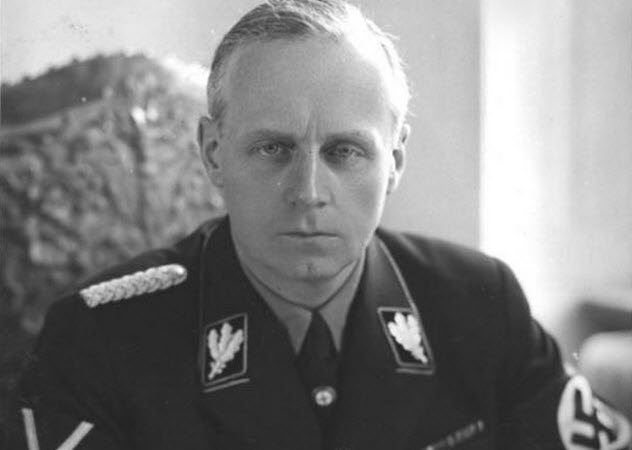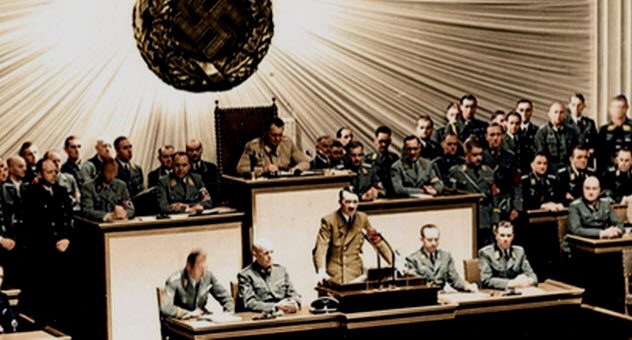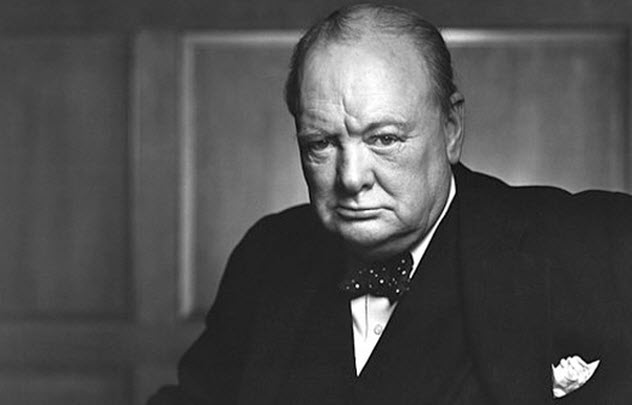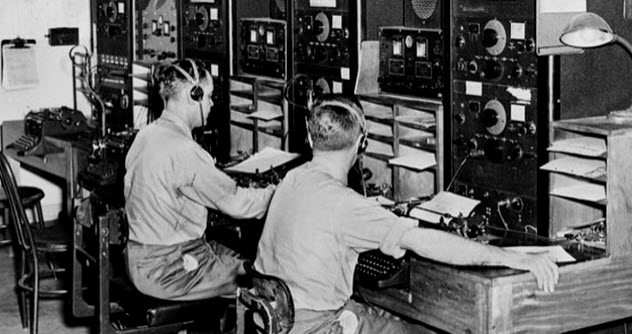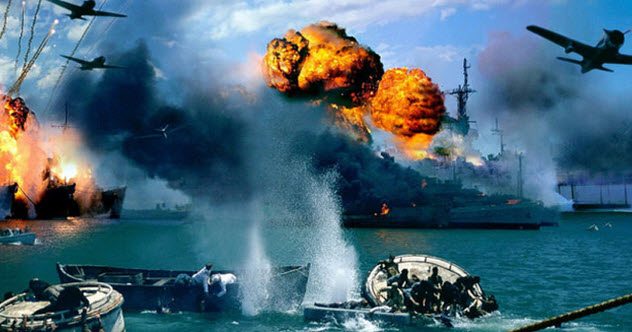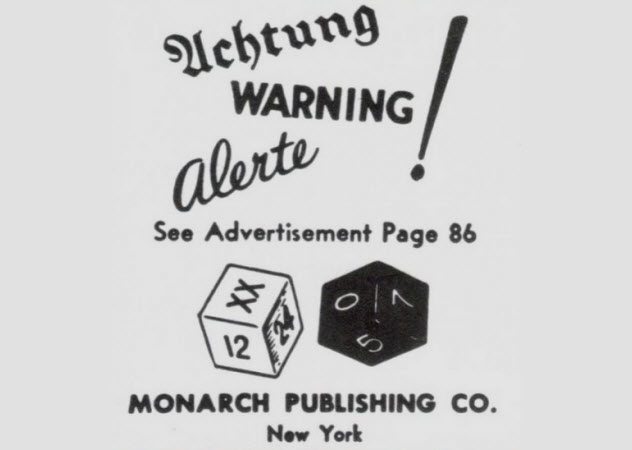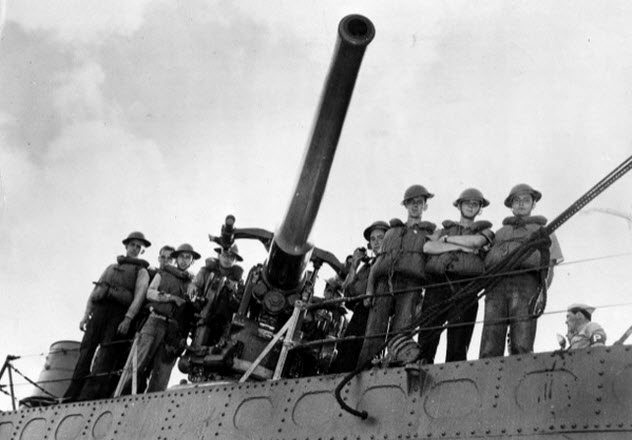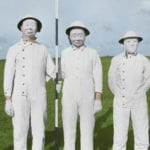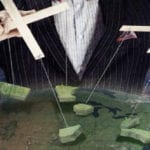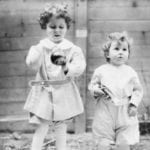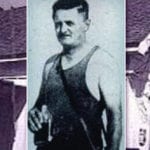In the decades since, many questions have been asked about the events of that dark December day in Hawaii. Some claims even suggest that the attacks were allowed to happen, perhaps even orchestrated to take place. Although the more extreme theories are most likely inaccurate, the attack on Pearl Harbor appears to have more to it than the wider public is supposed to know.
10 Hitler Encouraged Attacks Through Joachim von Ribbentrop?
Although there is no solid proof of direct encouragement, it is claimed by several researchers that Adolf Hitler was encouraging the Japanese to launch their anticipated attack on the United States through his foreign minister, Joachim von Ribbentrop. This was done as late as the day before the attack (December 6, 1941) by giving the impression that the German military was about to take Moscow. There was already a signed German-Japanese pact that had the Japanese looking out for German interests, although it didn’t bring Japan into the war. In reality, while German troops had pushed deep into the Soviet Union by early December 1941, the Germans were all but beaten. Some units had already abandoned their positions of their own accord. Such were the blatant signs of impending defeat at the hands of the Russians. The day following Pearl Harbor, German troops were in full retreat. Whether Hitler was secretly aware of the attacks or merely seized the opportunity to his (perceived) advantage is up for debate.[1]
9 Hitler Instantly Declared War On The US
Many people saw it as insanity (and perhaps it was), but almost immediately following the news of the attacks by the Japanese on Pearl Harbor, Hitler declared war on the United States. There are several theories as to why he did this. As you might imagine, they range from the crazy to the reasonable. History would suggest that Hitler wanted to embroil the Russians in a war on two fronts—with the Allies on one side and the Japanese on the other. With the United States now entering the war, there was the hope that the Soviet Union would switch sides and fight the Americans.[2] Other more outlandish theories suggest that Hitler’s end goal, as was the ultimate goal of Pearl Harbor, was to draw the Americans into the war. Something that public opinion was very much against.
8 Winston Churchill
It is no secret that Winston Churchill wished to bring the United States into World War II. When Hitler declared war on the United States, Churchill wrote in his diary: “Being saturated and satiated with emotion and sensation, I went to bed and slept the sleep of the saved and thankful!” He also compared the United States to a “gigantic boiler. Once the fire is lighted under it, there is no limit to the power it can generate!” Whether Churchill’s words were part of a preconceived plan—by him or by much more powerful people above him—is open to debate. But his words about the future military power of the United States following the war were chillingly prophetic. Further information also came to light that suggested the British intelligence services had been intercepting Japanese messages for years before the attack on Pearl Harbor. However, while we know there was intercepted intelligence, we have no idea exactly what was intercepted as the messages remain classified.[3] This is a red light to some people. They suggest that the Americans might have been in a position to defend themselves against the attack at Pearl Harbor in 1941 if these messages had been relayed to the US government. However, as we will see in our next entry, the Americans (who have since released all their own such documents) had intelligence and warnings, too. But they appear to have been ignored.
7 Ignored Intelligence
US intelligence files from the months before Pearl Harbor and Franklin Roosevelt’s own declassified files were eventually made public. When this happened, it was obvious to most that the United States government and military leaders had grossly underestimated the apparent attack from the Japanese. Even the location was seemingly spelled out for them.[4] In the years since the bombing, plenty of people have struggled to believe that the United States military could have missed so many opportunities to better prepare for what appeared to be an obvious upcoming attack. Assuming there was a predetermined plan to open the door for the United States’ entry into the war in Europe (which many theories suggest), then it is understandable that such intelligence would be hidden away.
6 Roosevelt’s ‘Awkward’ Promise
In the years leading up to the outbreak of World War II, US President Franklin D. Roosevelt assured the American public that “your boys are not going be sent into any foreign wars!” He even stated on the campaign trails of 1940 that US citizens can “nail any talk about sending armies to Europe as deliberate untruths!” It is widely regarded as the key promise that clinched his victory in that election. Whether the pledge was a genuine one that he simply couldn’t keep due to a changing landscape or whether he was always aware that America would eventually enter the war is a point still debated today. In fact, many conspiracy theorists do just that. Some theories state that Roosevelt wanted to join the war all along, whether for economic reward for the US military or, more likely, for influence in mainland Europe following the war’s end.[5] Of course, many conspiracy theorists will tell you that the war was planned all along. Although Roosevelt was supposedly prepared to lead the US into war-torn Europe, he first had to be reelected for an unprecedented third term as US president.
5 The Winds Code
Although it is a widely known claim, “The Winds Codes” were supposedly secret information disguised as weather reports issued by the Japanese to inform its military of their plans of action. This included identification of the target and the time of the attack. Most mainstream historians dismiss the importance of this claim. According to those who believe that the reports of these secret codes were authentic, “West wind clear” meant that the Japanese would attack Britain (mainly through British colonies in the East) and “North wind cloudy” signaled an attack on the Soviet Union. The forecast “East wind rain” supposedly indicated an attack on the United States. According to the Congressional investigation into the Pearl Harbor attack, indications via these “weather reports” on December 3, 1941, suggested that the Japanese were planning immediate action against the United States and the British. However, these messages were supposedly missing from official US Navy files and so could not be substantiated.[6]
4 Direct Warnings And Increased Activity
In addition to the increasingly direct and pinpointed locational warnings issued to the United States, there was an obvious rise in activity from the Japanese themselves. Again, these displays were largely ignored—at least publicly. Many questioned this official response—both at the time and in the decades that followed. The US intelligence services were some of the best in the world, and it was known that several Japanese military codes were deciphered by US codebreakers. In military and intelligence circles, it was also widely known that Japan was mobilizing its units into attack positions. So it wasn’t just “oddball” conspiracy theorists who questioned whether the US military (on orders from the highest people in the US government) allowed the attacks to happen.[7] Of course, this was meant to provoke public outrage and easily convince US citizens of the need to join the war effort. Whether true or not, that was the ultimate result of the Pearl Harbor attacks.
3 ‘The Deadly Double’ Game Conspiracy
Perhaps one of the most bizarre claims connected to the Pearl Harbor attacks involved the game “The Deadly Double.” Its advertisements began to appear in the weeks leading up to the attack (notably in the November 22, 1941, issue of The New Yorker magazine). The game advertisement also had the word Achtung in typical German writing and was released via the Monarch Publishing Company.[8] Many people have since cast the most suspicion on the numbers written on the two dice in these newspaper ads. The numbers “12” and “7” don’t appear on normal dice. But if you believe the theories, those numbers do spell out the date of December 7! In more recent times, theories of such information being “hidden” are commonplace among conspiracy theorists. However, back in the 1930s and ’40s, this was not the case. Does this lend credibility to the theories that these types of hidden-in-plain-sight messages are used among the elite—those in the know—and have been for some time?
2 The US Shot First!
If reports of this little-known incident are to be trusted, the attack on Pearl Harbor saw the United States fire the first shots against a Japanese submarine. In fact, these shots were the first of any kind for the United States in World War II. Obviously, these shots were still of a defensive nature, and Japan was well inside United States territory. The discovery came to light when marine researchers found the ruins of a Japanese minisub on the seabed in the waters around Pearl Harbor. A bullet hole was discovered in the sub, which indicates that claims of a battle between US soldiers and Japanese subs before the surprise aerial attack are likely to be true. While it is almost certain that the attack would have happened whether the unknown US soldier had fired the first shot or not, John Wiltshire, who headed the research mission, stated rather dramatically, “It’s the shot that started World War II between the Americans and the Japanese!”[9]
1 The Prisoner Of Pearl Harbor
Although US casualties on December 7, 1941, totaled over 3,500 people, one often overlooked part of the Pearl Harbor tragedy was the capture of one of the Japanese attackers. Several small subs had infiltrated the waters around the docks to engage in more intimate attacks. Subsequently, these vessels were attacked by US troops, but one sub in particular malfunctioned in the waters. One of the two-man crew was believed to have drowned. But Kazuo Sakamaki, the other Japanese naval officer, washed up on a Honolulu beach and was captured by US forces. Sakamaki was the first Japanese prisoner of war taken by US forces.[10] He became a committed pacifist after the war and rarely spoke about Pearl Harbor except to confirm that he was merely “doing his duty” as assigned to him by his superiors. Sakamaki died in 1999 at age 81.
+ Why Didn’t They Attack Key Fuel Supplies?
Although the loss of life at Pearl Harbor was tragic, the loss of ships was only in the single digits. (Many damaged ships were repaired and fought in other battles later in World War II.) In that respect, the results of the attack were not as catastrophic as the public was led to believe. However, one aspect that raised the eyebrows of some conspiracy theorists and researchers was why the Japanese neglected to target the fuel supplies, which were nearby and would have inflicted much more consequential and long-term damage on the United States. As crazy and even disrespectful as it might sound, this was proof to some people that the attacks were allowed to happen and were completely orchestrated with American collusion. Supposedly, the US government was willing to lose some ships and the unfortunate soldiers who happened to be there that day, but the US was not willing to suffer damage to such a key target.[11] This notion of one controlling force of individuals who funded both sides and completely orchestrated events was brought up again when some reports from US soldiers began to surface. Despite the absolute destruction all around them as they pushed toward Berlin, key military targets (later proved to be run by IG Farben) were almost always left undamaged as if they were “off-limits.” Read More: Twitter Facebook Me Time For The Mind
